By James R. Hedtke
Wednesday, August 23, 1944, was a day of triumph for the Allies in their struggle against the Axis powers. On the Eastern Front in Europe, Soviet forces cut off 12 divisions of the German Sixth Army in Romania and compelled the Romanian government to capitulate to the Red Army. On the Western Front, the liberation of Paris was under way. But also on that day, one of the worst recorded World War 2 casualties would occur in Lancashire: the Freckleton air disaster. An American Consolidated B-24 Liberator bomber on a test flight crashed into an English village and killed 61 people, including 38 school children. The village lost almost an entire generation of children. This crash was the single largest air disaster suffered by the Allies in World War II.
The morning of August 23 seemed quite ordinary in the Freckleton area. Servicemen on the day shift at Base Air Depot (BAD) 2 repaired and refurbished a variety of planes, including North American P-51 Mustang fighters and B-24s. Inhabitants of the village ate their breakfasts as they prepared for another work day. Students anxiously awaited their second day of school after the summer recess, while teachers reviewed their lesson plans. Patrons at the Sad Sack Café, a local eatery, discussed the war in Europe and the anticipated liberation of Paris. Even the weather forecast was mundane and typically British. It called for “some early sunshine and light cloud followed by rain showers later in the morning.”
John BLoemendal & the Classy Chassis II
In those early hours, 1st Lt. John Bloemendal had double duty at BAD 2. The experienced, athletic, and handsome pilot from Minnesota served as both a test pilot and officer of the day. At 8 am, Bloemendal drove down to the operation shack for a test flight. He selected two B-24s for test flights and assigned himself to fly the Classy Chassis II. The B-24H-20 Liberator, serial number 42-50291, had been assigned to the 486th Bomb Group, 832nd Bomb Squadron, and made bombing runs against airfields and coastal defenses in France. The Mighty Eighth had sent the Classy Chassis II to BAD 2 for repair and refurbishment. Bloemendal was an experienced test pilot who averaged about 4.5 hours of flight time each day. He had logged almost 110 hours at the controls of B-24Hs and was well aware of the plane’s eccentricities, especially the shift of gravity in this model from the tail to the nose of the aircraft.
Test flight operations had scheduled the Classy Chassis II for an 8:30 am takeoff that Bloemendal scrubbed when he was needed immediately at another part of the base in his capacity as officer of the day. Bloemendal rescheduled the test flight for 10:30 am. This delay sealed the fate of John Bloemendal and the village of Freckleton. (This story was first published in the December 2014 issue of WWII History Magazine. Get your copy today!)
Shortly after 10 am, Bloemendal returned to the operations shack and was ready to take the Classy Chassis II up for a test flight. Bloemendal gathered his crew of Sergeants Jimmie Parr and Gordon Kinney, and they headed to the aircraft to perform preflight inspection. Lieutenant Peter Manassero, from San Mateo, California, commanded the second B-24 scheduled for a test flight that morning.
At 10:30, the control tower at the Warton airfield cleared both B-24s for takeoff. Once airborne, the two Liberators headed northward at an altitude of approximately 1,500 feet. Both pilots were standing by on VHF radio when Bloemendal called Manassero’s attention to a cloud formation toward the south-southeast. Manassero recalled that the formation was “a very impressive sight and looked like a thunderhead.”
Foul Weather Engulfs the Air Base
At approximately the same time that the two pilots were discussing the cloud formation, General Isaac Ott, commander of BAD 1 at Burtonwood, telephoned BAD 2 headquarters and informed the base executive officer, Lt. Col. William Britton, about the storm. Ott also ordered Britton to recall “any of Warton’s airborne craft to the ground at once.” Britton relayed Ott’s orders to Warton’s control tower, and the two B-24s were instructed to immediately return to the base.
By 10:40, weather conditions in the Freckleton/Warton area had seriously deteriorated. Heavy rain began to fall as lightning streaks illuminated the darkened sky. The cloud ceiling was 400 feet, and visibility was less than 300 yards. Wind gusts hit 60 to 70 miles per hour, uprooting trees and overturning chicken coops in the Freckleton area.
At Holy Trinity School, teachers and students observed the darkness descend on the village. The pounding rain was overshadowed by the gusting winds, the roar of thunder, and lightning bolts slicing through the sky. Five years old at the time, Ruby Whittle (nee Currell) remembers, “It went very, very dark. There was thunder and lightning, and all sorts of crashes and bangs overhead. I remember the teacher putting on the classroom lights and she began reading to us.”
Attempted Abort—Damage Everywhere
At 10:41, the Warton control tower cleared Bloemendal to land, and the Classy Chassis II began its approach to the airfield. Manassero, in the second B-24, was following about 100 yards off the right wing of the Classy Chassis II. As both planes dropped down to 500 feet and lowered their landing gear, the pilots encountered heavy rain and zero visibility. Seeing how treacherous the weather conditions had become, Manassero radioed Bloemendal that he was going to abort his landing and head northward out of the storm. Bloemendal answered, “Roger,” and then tried to abort his landing as well.
It was too late. As Bloemendal and his small crew tried to retract the landing gear and pull the aircraft out of its approach to the runway, disaster struck the Classy Chassis II. Bloemendal tightly gripped the controls and ordered Jimmie Parr to give him maximum speed to gain altitude. As Bloemendal banked the B-24 to the right, the violent turbulence and wind gusts that accompanied the thunderstorm grabbed hold of the Liberator.
Out of control with its wings nearly vertical to the ground, the 25-ton aircraft with 2,793 gallons of 100 octane aviation fuel aboard careened into the village of Freckleton at 10:47 am. The Classy Chassis II first clipped some trees and then cartwheeled down Lytham Road. The Liberator partially damaged three houses and demolished the Sad Sack Café. The impact of the crash immediately killed John Bloemendal, Jimmie Parr, and Gordon Kinney.
The Classy Chassis II completely obliterated the Sad Sack Cafe. Allan and Rachel Whittle were the proprietors of the eatery and lived there with their 15-year-old daughter. The café was in a converted garage and was a popular respite for the personnel of BAD 2 as well as the British Royal Air Force (RAF) airmen stationed down the road in Kirkham. It was a place where American and British servicemen could go to get away from the everyday drudgery of base life and the less than tasty morsels served at the mess hall.
50 Operations, 18 Surgeries
There was only a small contingent of customers inside the Sad Sack at 10:45 am on August 23. The rain kept many American and British servicemen from making the trek from their bases to the snack bar. The Whittles and their small staff of three were serving breakfast, coffee, and tea when the crash occurred. The firestorm that consumed the Sad Sack killed 18 of the 20 people in the building, including the Whittles, the wait staff, four RAF airmen, seven American GIs, and one local patron. Only RAF sergeants Bill Bone and Ray Brooke survived the inferno.
Sergeant Bone recalled that as he approached the counter for service “That was it. I found myself completely in the open, no building. The skin from my hands was hanging down from my nails. Ray and I progressed from the area through the grace of God.” American servicemen who rushed from BAD 2 at the time of the crash rescued Bone and Brooke and took them to the base hospital. Over the next five years, Brooke would undergo almost 50 operations, while Bone would endure 18 surgeries to reconstruct his badly burned body.
Tragedy at the School
The B-24’s momentum slid it across the road, and its nose turret slammed into the infants’ wing of Holy Trinity School. The whole area erupted into a fireball and instantaneously engulfed the school rooms containing 41 four- to six-year-olds and their two teachers, Jennie Hall and Louisa Hulme. For many of the students, it was their first week of school. Twenty-one-year-old Miss Hall was just in her second day of teaching at Holy Trinity. Miss Hulme was scheduled to retire the following week.
The bomber’s flaming fuel quickly enveloped the classrooms, trapping the 41 students and their two teachers in a ring of fire. In a matter of minutes, Freckleton lost a generation of children. Thirty-four of the students immediately perished in the inferno. Rescuers from BAD 2 and the school’s headmaster, Mr. Billington, were able to pull seven children and the two teachers from the burning rubble. Four of the children and the two teachers later succumbed to their injuries at the base hospital. Of the 43 people in the infants’ wing at the time of the crash, only three children survived. Ruby Whittle, George Carey, and David Madden. All three would endure years of painful surgeries on their terribly burned bodies.
The devastation in the infants’ wing was complete. Seven of the young victims were either first or second cousins to each other. Ironically, three of the children were evacuees from the London area. They had come to Freckleton as part of Operation Rivulet. The British government had instituted this program to move children to safe havens out of the range of German V-1 rocket attacks. Only two children from Freckleton, Ruby Whittle and George Carey (David Madden was from Brighton, England), escaped the infants’ wing holocaust. For years to come, the local school was missing an entire grade level.
The older students in the rooms north and south of the infants’ wing fared much better than the younger children. There were no deaths among the older children, and rescue workers quickly led them to safety while extinguishing the flames in the rest of the school building. Most of the survivors, however, suffered the loss of siblings, cousins, neighbors, and friends and still feel the loss of their loved ones today.
A communal service was held for the victims on the afternoon of August 26. The American military provided coffins for the deceased and covered all final expenses. GIs dug the communal grave in Holy Trinity Cemetery. Personnel from BAD 2 served as the honor guard for the funeral procession and as pallbearers for the children’s coffins. The funeral itself consisted of a procession through the village, services at Holy Trinity Church, and burial in the church’s cemetery.
At the conclusion of the service, the American servicemen lifted the tiny caskets and carried them through an honor guard formed by the personnel from BAD 2. The line of caskets and mourners processed the short distance from the church to the cemetery. More than 500 floral tributes adorned the mounds of dirt surrounding the gravesite. As the pallbearers approached the communal grave excavated in the shape of a T, they set their caskets down on the edge of the hole. Servicemen in the grave then took the children’s caskets and laid them to rest in the short arm of the T. The adult victims of the crash were later placed in the trunk of the T.
The Crash Investigation
The USAAF appointed Major Charles Himes to oversee the investigation of the crash. Himes was stationed at BAD 2 and was the chief test pilot at the base. He was familiar with the airfield, the weather conditions of the area, the intricacies of flying a B-24H, and had witnessed the violent thunderstorm on the morning of August 23. He also knew John Bloemendal well and had flown several missions with him.
Based on its findings, the Accident Investigating Committee made a singular recommendation to USAAF Headquarters that “all pilots who are gaining most of their flying experience in England (subsequent to flying school) be emphatically warned about entering thunderstorms or flying under thunder heads.” Nowhere in the report is there any mention that perhaps Lt. Col. Britton and the Warton control tower should have advised Bloemendal about the severity of the local weather conditions and ordered him not to land at Warton. Given the weather conditions, Britton and the control tower should have advised Bloemendal to fly northward toward Scotland and avoid the heavy weather around Freckleton. Himes’s report appears to be incomplete and inaccurate in placing singular blame for the accident on the shoulders of Lieutenant Bloemendal.
Seventy-five years have passed since that fateful August morning. The story of the Freckleton air disaster has been swept into the footnotes of the history of World War II. Two memorials stand sentinel to the legacy of this little-known tragedy. One is in the village of Freckleton in Holy Trinity Cemetery. It commemorates the final resting place of the crash victims. The other memorial is at the Mighty Eighth Heritage Museum in Pooler, Georgia, where a 25-foot by 25-foot square garden contains a stone monument to the victims of the Freckleton disaster and the heroism of the men from BAD 2.
It is important remember the 61 victims of the Freckleton air disaster. The tragedy demonstrates the capricious and cruel nature of war. The sacrifice and loss of life were part of the price of the freedom and liberty enjoyed today by free citizens. Though their lives abruptly ended, their legacy never will.
Originally Published February 20, 2015
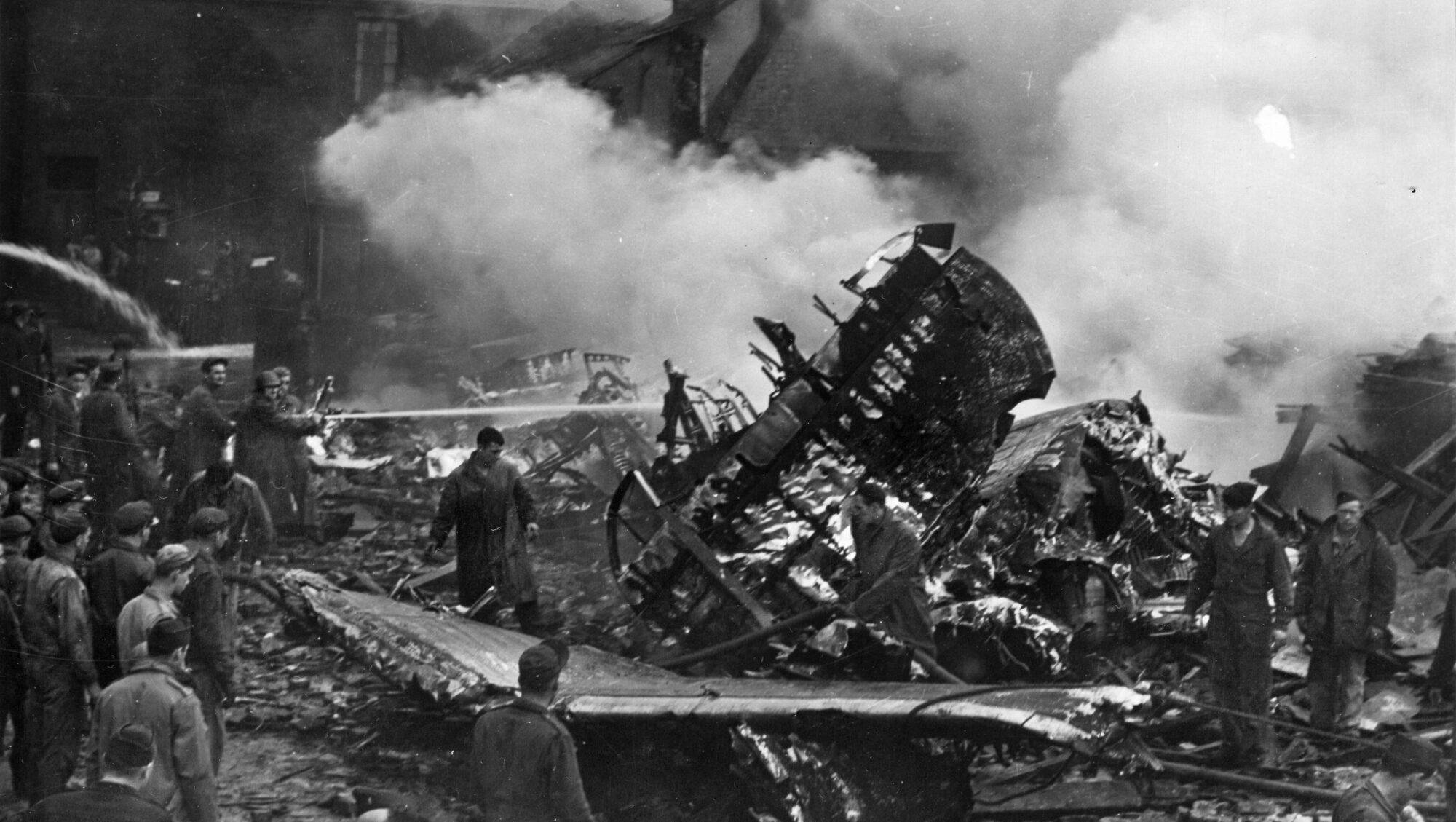
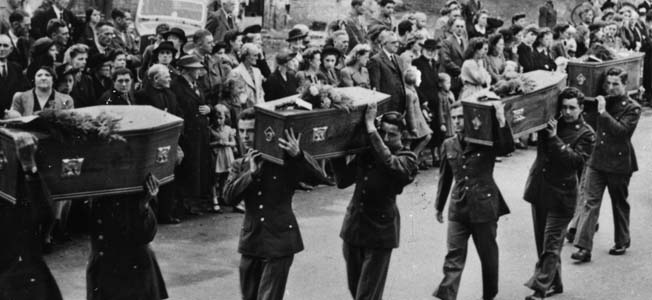
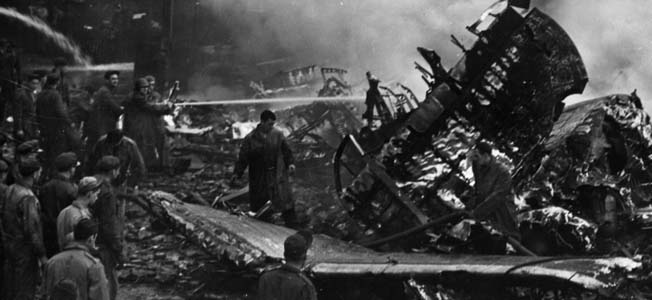

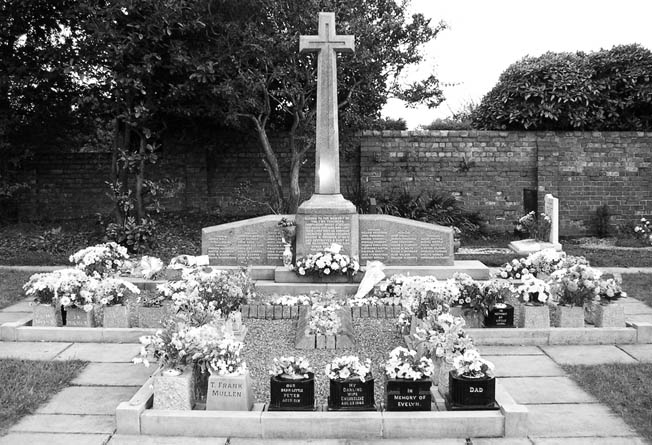
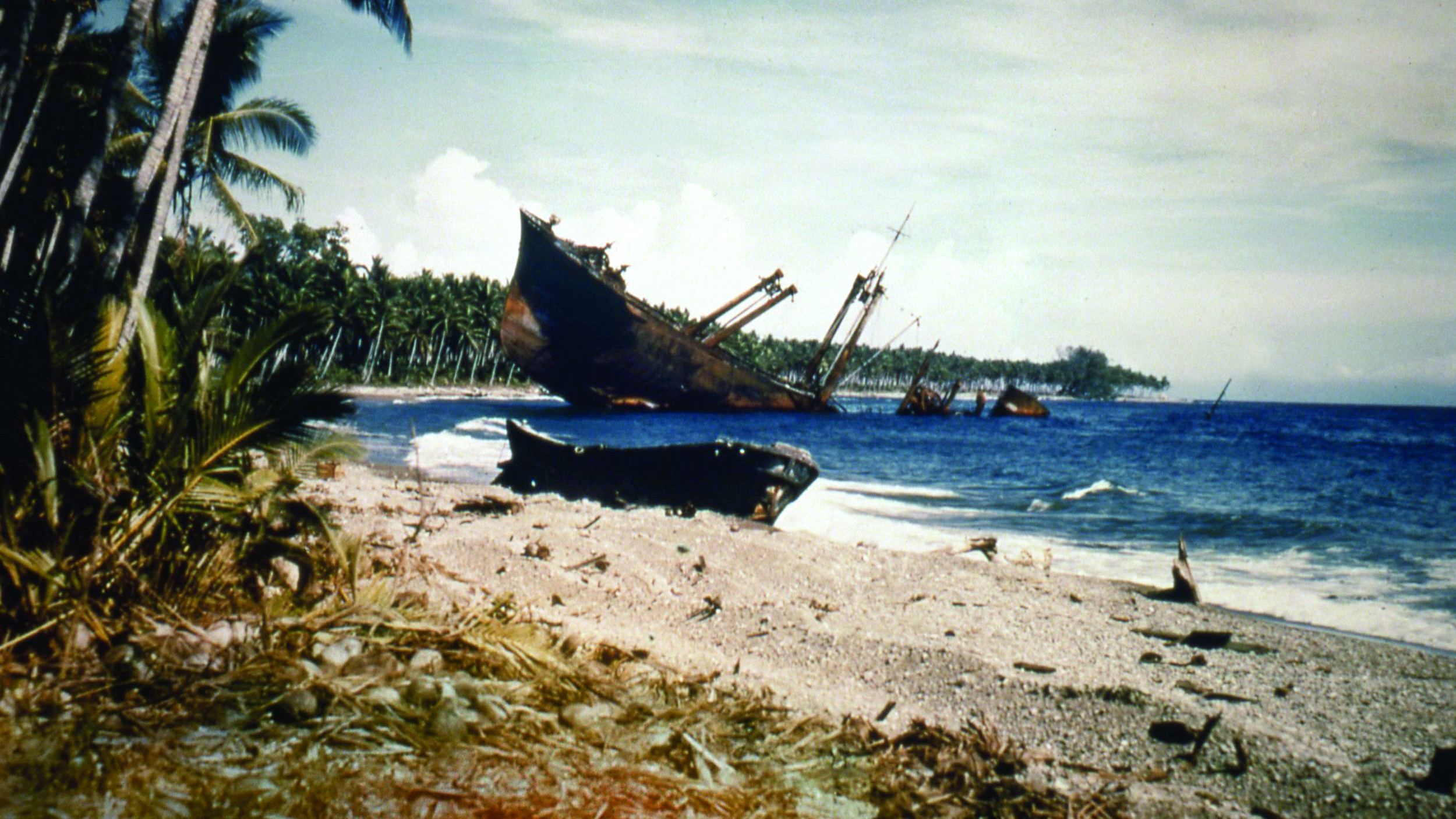
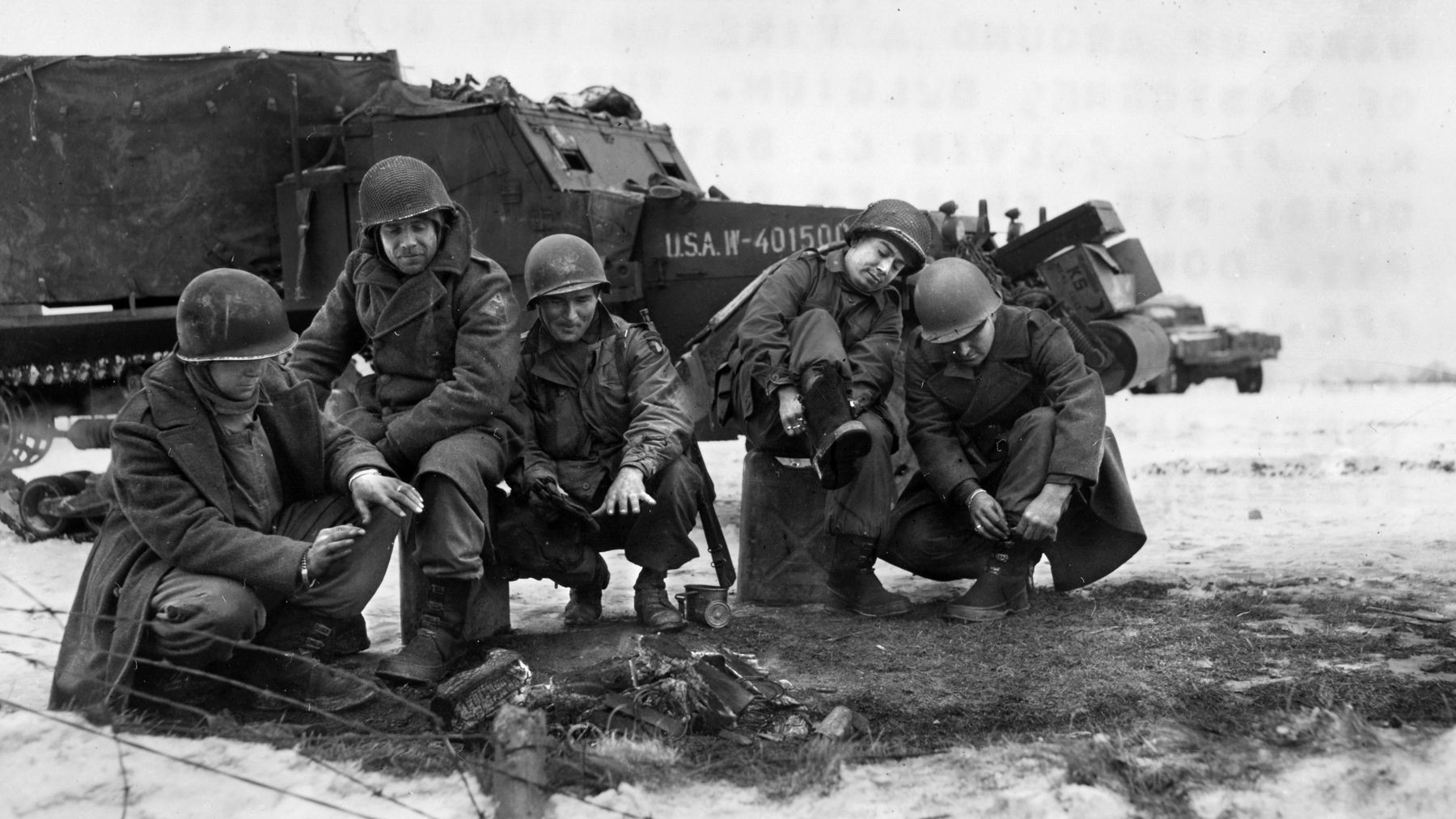
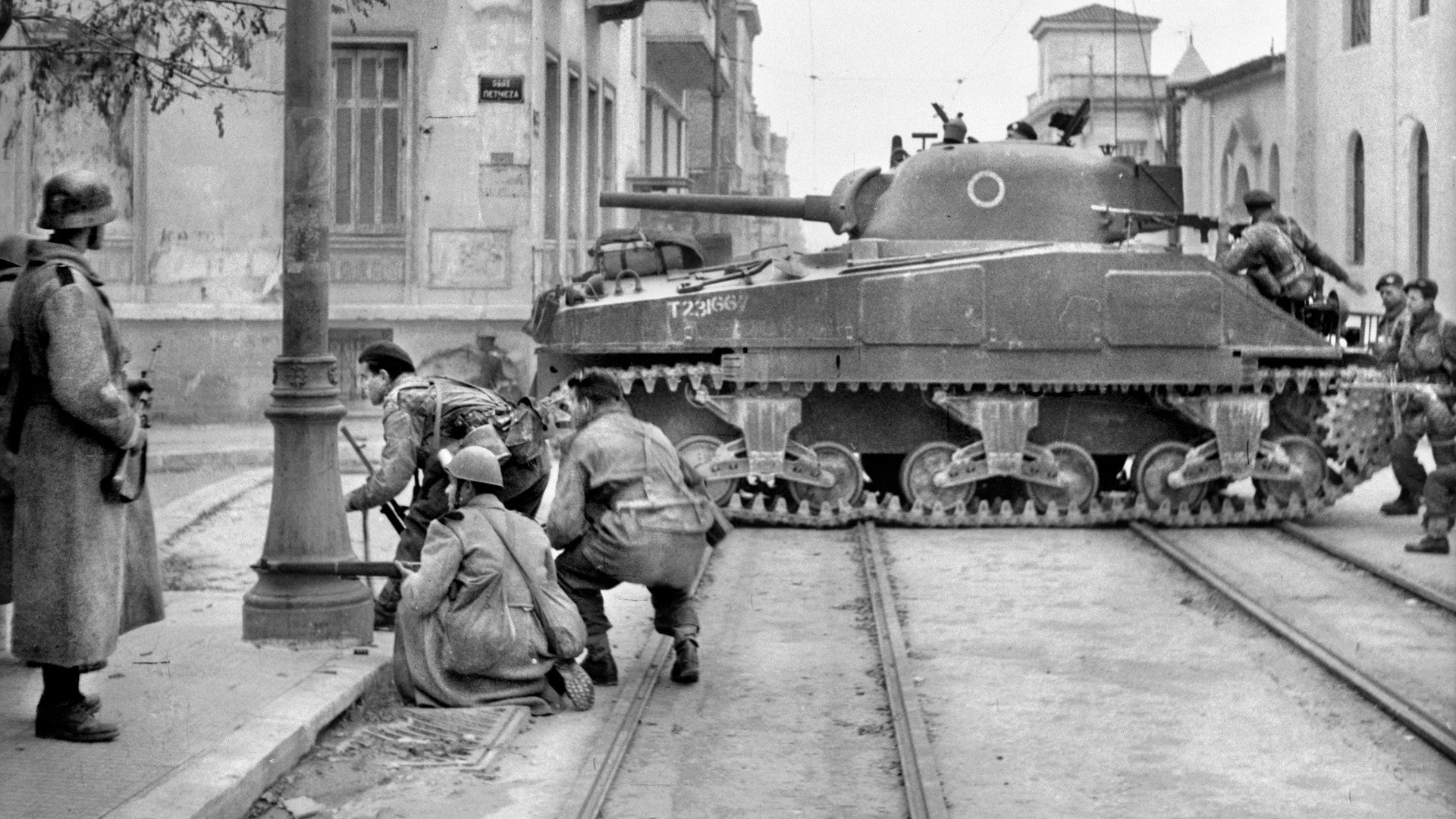
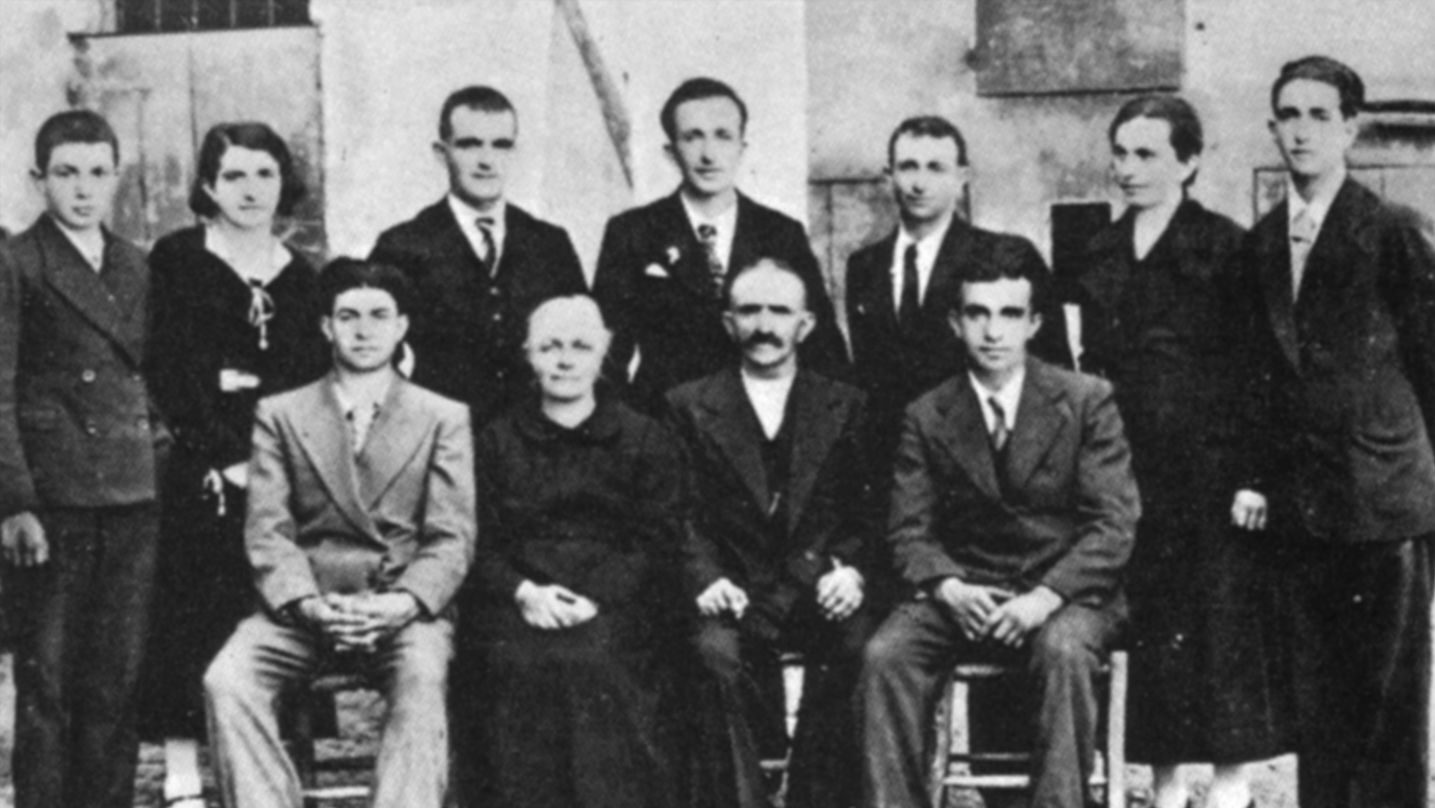
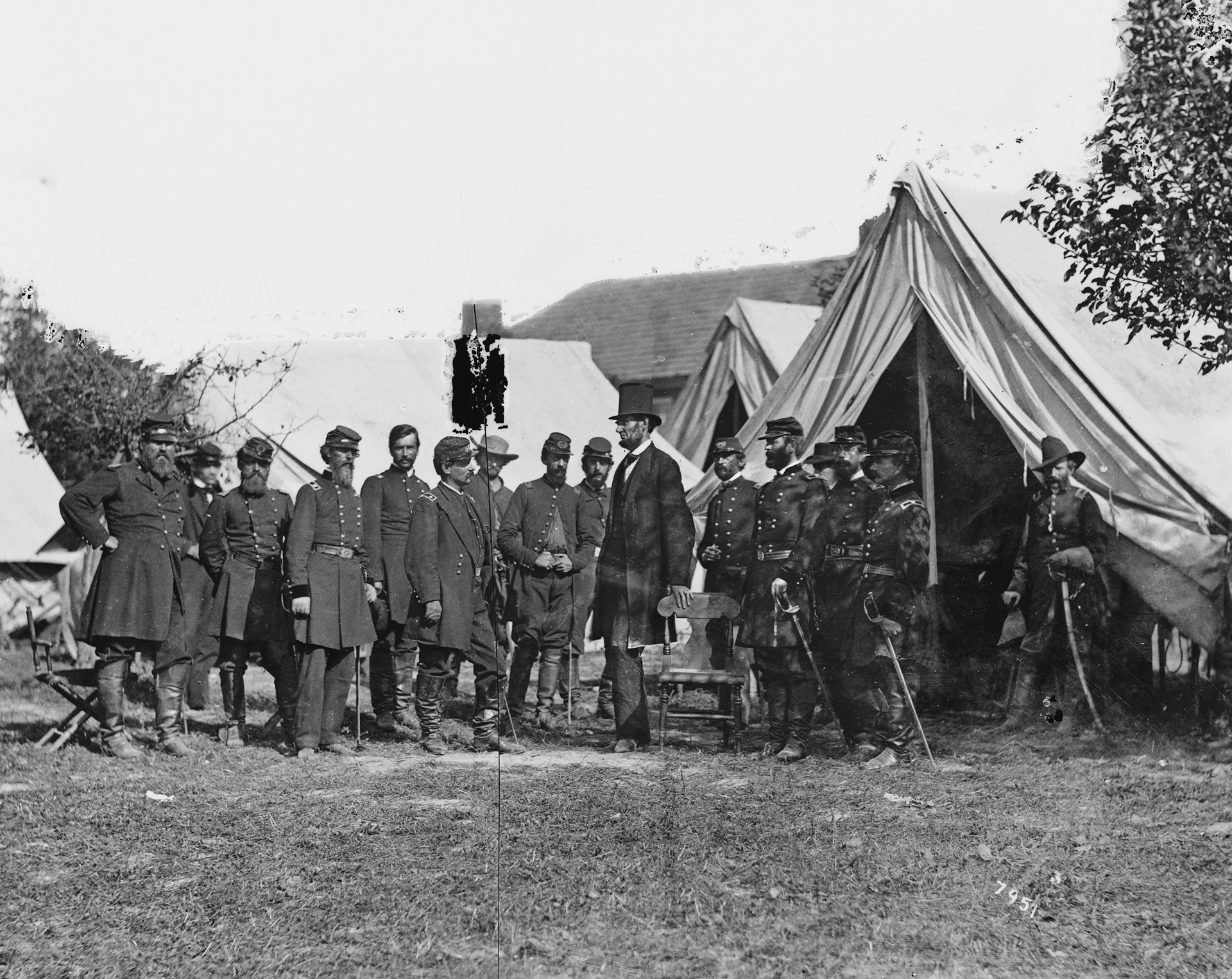
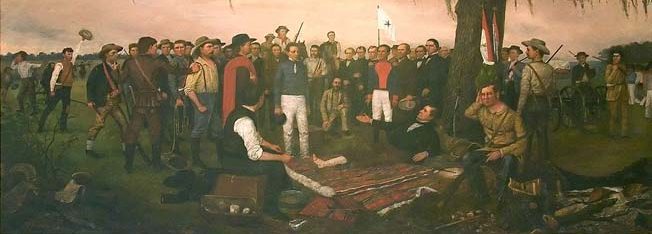
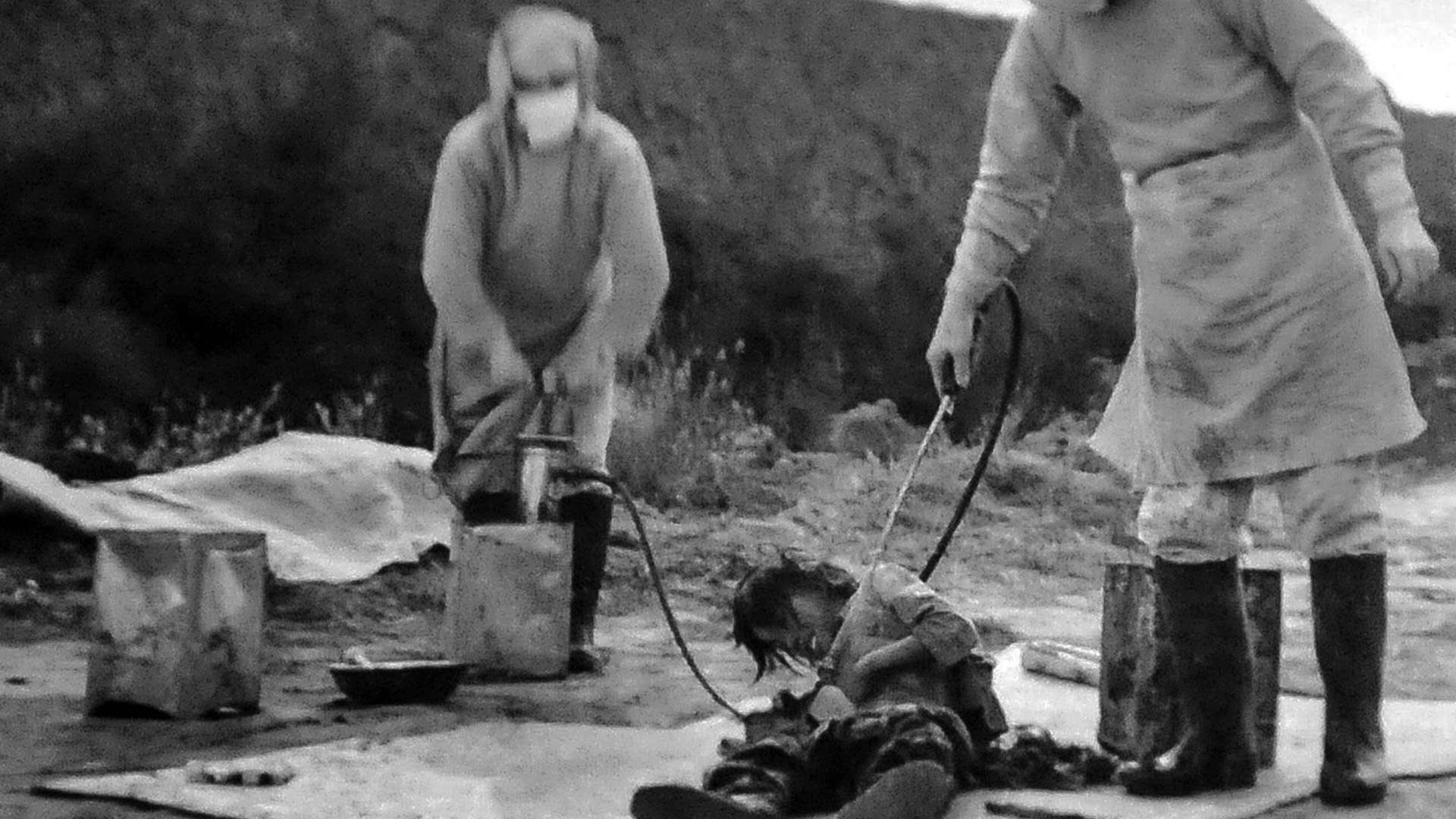
This story is close to my heart as my mother survived it. She was in the class that was devastated but was off that day with supposed tonsillitis.. But for that, I wouldn’t be here. This is a little known story so thank you for putting this out there. I went to the school that was built to replace the destroyed one. Freckleton Church of England Primary School. I played on the memorial as a kid (I know, probably shouldn’t have) when it was in its original location. O played in the derelict buildings of the old school before it was finally torn down. So many memories, sad and happy..
Ruby is my great great great Aunty it’s interesting to hear about this I think she is still alive I’ll ask her about it when I get the chance
Gordon was my mothers cousin, and she and her sister lived with them in the great depression. They were very close, and their parents were related by marriage, a brother and sister, to the next door brother and sister. Gordon was the favorite child of his mother, she took his death very hard. He attended Altus jr college, also University of Oklahoma, but left to fight in the war. He was a 1/4 German, and part Choctaw and Wichita Native American. He was a hard worker, and went to fight against the Nazis. He loved England, and sent many things back home to the folks, about were he went, and what he saw. His mother never forgot him, and kept his room as he left it, only adding coins, letters, and things he sent home. Barbara is his niece, and inherited these things.
About 15 years ago my father found out from a distant cousin that he had an uncle who my father had not known about his entire life. The uncle was Michael Garner who was married and had a daughter, Judith, who at only 4 years old was a victim of the disaster. It tuned out that Michael himself was killed in Normandy several days before this disaster. His poor wife, Cicely Jane wasn’t told the news of his death until after the funerals and burials had been done. She eventually re-married the American serviceman who, I believe, carried the coffin of her daughter.
My father was stationed there my aunt from Preston was a switchboard operator at the time all lines were cleared and kept open when this happened. I live in Pennsylvania and we would visit the cemetery regularly in the 60’s when I was a little girl I was in their May procession we all wore white dresses and the May queen. I’d always stop by on my way to Blackpool I’m told that the Americans still pay for the upkeep I’m so glad. I’ve made many trips something you can’t forget even miles away. Living in the past. Dorothy Minnich
Oh!!! My Gosh, Aunt Jane married my uncle (Painter Clark Alexander) who was 6’8″. Their son James is still alive and living in IL, I haven’t spoken personally to him but I have spoken to his ex-wife. I am working on the Alexander history and have nothing to fill in about Aunt Jane’s first husband. I think her name was Barlow. Years ago I met her older sister. She was just as nice Aunt Jane. Aunt jane was really broken up about her daughter but I never hears her say anything about her husband.
And David I think my uncle on my mom’s side was injured in Normany also I have quite a story about that.
Hi Jacqueline I would like to talk to you about this. Your aunt Jane is also the aunt of my father. I don’t know anything about her and would love to hear your stories. I dont know how we can get in touch as I don’t seem to be able to post an email address in the comments here. Are you using any particular website to build your family tree?
Can i comment here?
Jacquelyn, I would love to get in touch with you. Your Aunt Jane is the Aunt my father didn’t know he had. It would be great to get in touch to swap information, I dont seem to be able to post an email address, maybe the website owners can find a way to put us in touch. Amazing to make a connection like this. davidgarner23 at yahoo dot com